Providing Aid, and Respect
By Marcia C. Dibble
Sonal Singh Wadhwa BS’01 is chief executive officer of the nonprofit Maitri India, which works to assist some of that country’s most vulnerable populations. Maitri is the Sanskrit word for loving-kindness, compassion, and friendship. Maitri India’s initiatives include improving the health and welfare of migrant populations, such as rickshaw pullers and the homeless; running a counseling and testing center for HIV/AIDS and other sexually transmitted infections; and providing support for abandoned elderly widows. Other projects include addressing domestic violence and providing educational and skill-enhancement opportunities for underprivileged children and women. “The work that Maitri does has an extremely real and deep impact on the lives of the people that we touch,” says Singh Wadhwa.

Sonal Singh Wadhwa, CEO of the nonprofit Maitri India, helps serve a meal to elderly widows. The group provides them with a meal once a day so they don’t have to beg for food in the streets. (Photos courtesy Sonal Singh Wadhwa)
Maitri was founded in 2005 by Sonal’s mother, Winnie Singh, and her stepfather, retired General Bhopinder Singh, with the initial goal of generating much-needed awareness among armed forces personnel and their families about health risks such as sexually transmitted infections and tuberculosis. Following its success in this effort, the organization expanded its reach.Singh Wadhwa joined Maitri in 2006, shortly after its founding, when her family was looking for someone to run the organization. “It seemed like a natural fit,” she says. “I was burnt out at my previous job as a consultant and felt very strongly that if I was working that hard, it needed to have a real impact on people’s lives.”
With a bachelor’s degree in finance from the University of Utah and an MBA from the Thunderbird School of Global Management, Singh Wadhwa had most recently been working as a consultant with Hewitt Associates (now Aon Hewitt). She had come to the U after finishing high school in India, at the encouragement of Ted Wilson BS’64, longtime director of the U’s Hinckley Institute of Politics and a close friend of her family. It was at the U that Singh Wadhwa had her first experiences working with vulnerable and/or disadvantaged groups, volunteering with Primary Children’s Hospital as well as the American Red Cross. “These experiences contributed to building a sense of understanding that there is much that a single individual can do to alleviate the suffering of another.”
After graduating from the U, Singh Wadhwa spent a year as a business information specialist with McKinsey Knowledge Center before becoming a business correspondent with Dow Jones Newswires for more than two years. She then embarked on her MBA, and after its completion in 2004, spent more than two years as a human resources and benefits consultant with Hewitt.

Maitri India runs a school that instructs more than 80 children who range in age from 4 to 17. Many of the children come from families where both parents left school early and work as daily wage earners.
Among its many endeavors, Maitri India works to provide migrant workers and the homeless with forms of identification. “For many individuals, this may be the first time that they have any document that gives them an identity, access to government benefits, and a voice when it comes to voting,” Singh Wadhwa says. Maitri also makes other efforts for this group such as public health assistance for sexually transmitted infections, including workshops and testing services, as well as street plays to increase awareness and aid in prevention.
In Project Jeevan, Maitri provides destitute widows with a cooked meal once a day so they don’t need to beg for food on the streets, where they are left to survive until they die, Singh Wadhwa says. “These women have faced complete rejection from their families and the society. And working and earning money isn’t an option for many of them, because they are so frail in health.” Maitri also provides the women with potable water and dietary supplements, blankets and clothing, access to shelter and healthcare, and other essentials, as well as arranging funeral services per their religious preferences, when the time comes.

Sonal Singh Wadhwa, who received her bachelor’s degree in finance from the University of Utah, joined Maitri India in 2006.
Maitri’s work with children includes facilitating workshops in schools, as well as providing scholarships and directly teaching courses. Maitri currently instructs more than 80 children ages 4 to 17. The younger students study English, Hindi, and math, and older students also receive support in science, economics, and career counseling. Many of the children come from families where both parents left school early and work as daily wage earners or in homes as drivers or cleaning help. “It’s always a cause for celebration when we have underprivileged children from our supportive education program making it to college or medical school or to the Army,” says Singh Wadhwa. “These are dreams that we have had to work hard to make the kids believe in, and it’s a victory for us as much for them when it comes true.”
Since 2007, the U’s Hinckley Institute of Politics has coordinated an internship program with Maitri every semester. Singh Wadhwa often works directly with the U interns, who help with a range of projects including the organization’s annual report, newsletter, website, grant proposal development and writing, background research for projects, and even development and execution of new projects. Kirk Jowers BA’92, current director of the Hinckley Institute, also serves on Maitri’s international advisory board. “Many of our programs became possible because of the initiatives or the hard work that our interns took upon themselves in the initial years,” says Singh Wadhwa.
“The most fulfilling part of this work is the intangible—what can’t be measured,” she notes. “When we go to our communities and they greet us with immense joy, I know that we are doing something right.”
—Marcia Dibble is managing editor of Continuum.
Web Exclusive Photo Gallery
[nggallery id=55]
A Horse’s Best Friend
By Ann Floor
Scott Beckstead JD’91 grew up in Twin Falls, Idaho, surrounded by goats, cattle, cats, dogs, rabbits, hamsters, gerbils, turtles—and horses. “I loved all my pets dearly,” he says. “They were my best friends, and given the choice, I preferred to spend my time with them.” So it was no surprise that as an adult, after obtaining a juris doctorate from the University of Utah’s S.J. Quinney College of Law, he opened his own firm on the Oregon coast and practiced civil law for 17 years, including numerous animal-related cases, and he co-authored a casebook on animal law. Over time, he became known as a leading national expert in animal law.
In 2008, the Humane Society of the United States and the Fund for Animals established the Duchess Sanctuary, a 1,120-acre home for nearly 200 formerly abused and neglected horses, in northern Douglas County, Oregon. Beckstead, with his lifelong passion for horses, experience growing up on his family’s ranch property in Idaho, and his expertise in rescuing and caring for abused and neglected animals as the leader of a local nonprofit animal rescue and foster care group in Oregon, was a natural choice to oversee the arrival of the horses and the opening of the sanctuary.
The Duchess Sanctuary is now considered a national model for the care of rescued horses. After Beckstead got the sanctuary up and running, a ranch manager was hired to take over its operations. Beckstead then moved in late 2008 into the position of Oregon senior state director of the Humane Society of the United States, where his advocacy and political skills have helped the group protect the state’s animals.

Scott Beckstead, a national equine expert, is senior director of the Humane Society of Oregon. (Photo courtesy Scott Beckstead)
In 2009, Beckstead helped lead lobbying efforts that convinced state lawmakers to pass one of the toughest puppy-mill laws in the nation. In 2011, he successfully worked to urge lawmakers to pass a bill to ban the possession and transfer of shark fins, a measure which has been copied in other states and countries as part of the global effort to protect the world’s shark populations. During Oregon’s 2013 legislative session, his group’s efforts prevailed as the state passed several animal protection laws, including restrictions on the amount of time dogs can be tethered, a ban on rodeo horse tripping (where a lasso is used to snare a horse’s legs— already prohibited by mainstream rodeos in 11 other states, but still a major problem in Oregon), and enhanced penalties for aggravated animal neglect. Beckstead is working with law enforcement officials to ensure that the new laws are fairly and uniformly enforced.
Beckstead, who also now teaches animal law as an adjunct professor at Willamette University, often is called upon by the Humane Society of the United States to serve as a national equine expert. He is a frequent speaker and presenter at equine welfare events and often assists the organization in its fight to stop the slaughter of American horses for human consumption. As he did in Oregon, Beckstead is working with other states to pass bans on horse tripping. He helped the city of Portland pass improved regulations to protect the welfare of carriage horses, and that experience and knowledge is coming to bear in other communities, including Salt Lake City. “It can be difficult to see the terrible things that people do to animals,” he says. “But the flip side is that I am well-equipped to jump in and fight to end animal cruelty, regardless of whether it takes the form of individual criminal acts in my own community, or institutionalized cruelty in places like factory farms and research laboratories across the nation.”
In addition to his animal welfare work, Beckstead served as mayor of Waldport, Oregon, from 2002 to 2007. He considers his education at the University of Utah’s College of Law to be one of his “most cherished assets,” he says. “I was encouraged by my professors to think critically and be a relentless advocate, and that training has paid off in the form of laws that will lead to a kinder and more compassionate world for animals.”
—Ann Floor is an associate editor of Continuum.
’50s
 Jeanette Misaka BS’52 MS’71, an emeritus clinical professor in the University of Utah’s Department of Special Education, was a recipient of the Japanese Foreign Minister’s Commendation for 2013. She was one of two individuals selected from within the jurisdiction of the Consulate General of Japan in Denver. Misaka was recognized for her outstanding contributions to the promotion of mutual understanding and goodwill between the people of Japan and the United States. As a former university educator specializing in cultural diversity, Misaka has worked to promote the rights of women, the disabled, and racial minorities, particularly Japanese American citizens. A member of the advisory council of the Heart Mountain Wyoming Foundation, Misaka experienced the internment of Japanese American citizens during World War II at Heart Mountain Internment Camp. She has been a dedicated member of the Japanese American Citizens League since the early 1950s and currently serves as a national league board member and as governor of its Intermountain District Council. LM
Jeanette Misaka BS’52 MS’71, an emeritus clinical professor in the University of Utah’s Department of Special Education, was a recipient of the Japanese Foreign Minister’s Commendation for 2013. She was one of two individuals selected from within the jurisdiction of the Consulate General of Japan in Denver. Misaka was recognized for her outstanding contributions to the promotion of mutual understanding and goodwill between the people of Japan and the United States. As a former university educator specializing in cultural diversity, Misaka has worked to promote the rights of women, the disabled, and racial minorities, particularly Japanese American citizens. A member of the advisory council of the Heart Mountain Wyoming Foundation, Misaka experienced the internment of Japanese American citizens during World War II at Heart Mountain Internment Camp. She has been a dedicated member of the Japanese American Citizens League since the early 1950s and currently serves as a national league board member and as governor of its Intermountain District Council. LM
’70s
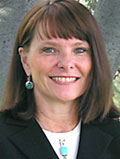 Martha Bradley-Evans BFA’74 PhD’87, senior associate vice president for academic affairs at the University of Utah, has received the Leonard J. Arrington Award from the Mormon History Association, its highest honor. The association is an independent, nonprofit organization dedicated to the study and understanding of all aspects of Mormon history. Bradley-Evans, who is also dean of undergraduate studies and a professor in the College of Architecture + Planning, writes about communal religious groups such as the Fundamentalist Church of Jesus Christ of Latter-Day Saints. Her latest book, Plural Wife: The Life Story of Mabel Finlayson Allred, published in 2012, received the Best Documentary Book Award this past September from the Utah State Historical Society.
Martha Bradley-Evans BFA’74 PhD’87, senior associate vice president for academic affairs at the University of Utah, has received the Leonard J. Arrington Award from the Mormon History Association, its highest honor. The association is an independent, nonprofit organization dedicated to the study and understanding of all aspects of Mormon history. Bradley-Evans, who is also dean of undergraduate studies and a professor in the College of Architecture + Planning, writes about communal religious groups such as the Fundamentalist Church of Jesus Christ of Latter-Day Saints. Her latest book, Plural Wife: The Life Story of Mabel Finlayson Allred, published in 2012, received the Best Documentary Book Award this past September from the Utah State Historical Society.
Bryson Garbett BA’77 has been honored with the 2013 Hearthstone Builder Humanitarian Award for his work as founder of Foundation Escalera, which has built schools and awarded scholarships benefiting more than 12,000 poor children in Mexico. He is president and founder of Garbett Homes. The company, based in Salt Lake City, has received national and local awards and recognition for pioneering affordable green housing. From 1982 to 1986, he served in the Utah House of Representatives as Utah’s youngest legislator. Garbett is a 2000 alumnus of the Harvard Business School and received his undergraduate degree in history from the U. LM

Kenneth R. Lord HBA’77 MA’81 has been appointed dean of the College of Business & Economics at California State University, Northridge. Lord has more than 25 years of experience in higher education and marketing. Since 2006, he had served as associate dean of the Kania School of Management in Scranton, Pennsylvania, and was a professor of management and marketing. Prior to that, he was a faculty member at Mercer University, in Atlanta, the State University of New York at Buffalo, and Niagara University. Lord’s research focuses on consumer behavior, and he was ranked among the world’s top advertising scholars in a Journal of Advertising article in 2008. Lord holds a bachelor’s degree in English and a master’s degree in communication from the University of Utah and a doctorate in marketing from Ohio State University.
’80s
 Paul B. Parker JD’88, a longtime Salt Lake County prosecutor, has been appointed by Utah Governor Gary Herbert to be a 3rd District Court judge, serving Salt Lake, Summit, and Tooele counties. Parker began his career in 1978 as an officer with the Vernal Police Department and had worked as a deputy Salt Lake County District Attorney since 1989. He graduated with a bachelor’s degree in police science from Weber State University in 1985 and then obtained a law degree from the University of Utah. He was a judicial clerk for the Utah Court of Appeals before joining the district attorney’s office, where he prosecuted cases ranging from theft and assault to homicide.
Paul B. Parker JD’88, a longtime Salt Lake County prosecutor, has been appointed by Utah Governor Gary Herbert to be a 3rd District Court judge, serving Salt Lake, Summit, and Tooele counties. Parker began his career in 1978 as an officer with the Vernal Police Department and had worked as a deputy Salt Lake County District Attorney since 1989. He graduated with a bachelor’s degree in police science from Weber State University in 1985 and then obtained a law degree from the University of Utah. He was a judicial clerk for the Utah Court of Appeals before joining the district attorney’s office, where he prosecuted cases ranging from theft and assault to homicide.
’00s
 Zoë Yujnovich MBA’04, president and chief executive officer of Canada’s largest iron ore producer, the Iron Ore Company of Canada, has been elected chair of the Mining Association of Canada for a two-year term. She is the association’s first female chair in its 78-year history. Yujnovich began her mining career in Australia with Rio Tinto (Comalco Smelting) in 1996 as a process and development engineer. She became a crew supervisor for Comalco and senior business analyst with Rio Tinto Procurement. She then moved to the United States, where she held management positions at Quadrem and Kennecott Land from 2000 to 2004. Yujnovich returned to Australia to work as plant operations manager for the Rio Tinto Pilbara Iron Mine. From 2007 to 2008, she provided advisory support to the chief executive of Rio Tinto at the company’s headquarters in London. She served as president of Rio Tinto Brazil from 2008 until her appointment to the Iron Ore Company of Canada in 2009.
Zoë Yujnovich MBA’04, president and chief executive officer of Canada’s largest iron ore producer, the Iron Ore Company of Canada, has been elected chair of the Mining Association of Canada for a two-year term. She is the association’s first female chair in its 78-year history. Yujnovich began her mining career in Australia with Rio Tinto (Comalco Smelting) in 1996 as a process and development engineer. She became a crew supervisor for Comalco and senior business analyst with Rio Tinto Procurement. She then moved to the United States, where she held management positions at Quadrem and Kennecott Land from 2000 to 2004. Yujnovich returned to Australia to work as plant operations manager for the Rio Tinto Pilbara Iron Mine. From 2007 to 2008, she provided advisory support to the chief executive of Rio Tinto at the company’s headquarters in London. She served as president of Rio Tinto Brazil from 2008 until her appointment to the Iron Ore Company of Canada in 2009.
Matt Geraci PharmD’06, who has a lifelong goal to become an astronaut, recently made it as a quarter-finalist for NASA’s astronaut program, receiving a rating of “highly qualified.” Although he did not make the most recent cuts, he says he has left a lasting mark on NASA operations through high-end glass signs that he designed for NASA’s newest mission control room for the International Space Station, at the Marshall Space Flight Center in Alabama. The signs are designed to change color and thereby allow each control station to communicate in ways never done before at NASA. The project can be traced back to an earlier one he did while a graduate student in the U’s College of Pharmacy. In 2006, he and his fellow students renovated a deteriorating outdoor courtyard of the college’s Skaggs Hall, using bricks engraved by Geraci, for their senior class gift. They used money raised from engraving supporters’ names on the bricks to establish an endowed Class of 2006 Service Scholarship Fund.
Kevin G. Walthers PhD’06 is now superintendent and president of Allan Hancock College in Santa Maria, California. Walthers serves as the fifth permanent superintendent/president in the history of the Allan Hancock Joint Community College District. He came to Allan Hancock after serving as president of Las Positas College in Livermore, California. Prior to that, he served in executive roles with the Utah State Board of Regents, the College of Eastern Utah, and most recently with the West Virginia Community and Technical College System and the West Virginia Higher Education Policy Commission. Walthers holds a bachelor’s degree from the University of Texas at Austin, a master’s degree from Texas A&M University-Commerce, and a doctorate in education from the University of Utah.
 Katherine Judd JD’07, a member of Clyde Snow & Sessions’ Employment Law Group, is the new president-elect of the Utah State Bar’s Young Lawyers Division, which has more than 2,000 members. The group’s efforts include Wills for Heroes, a statewide program to provide wills and other estate planning documents for emergency first responders and their spouses or partners, and Serving our Seniors, which offers pro bono health care directives and powers of attorney to senior citizens. Members of the Young Lawyers Division also offer free services through legal clinics across the state. Judd has been a member of the division since 2007 and since 2010 served as secretary on the executive board.
Katherine Judd JD’07, a member of Clyde Snow & Sessions’ Employment Law Group, is the new president-elect of the Utah State Bar’s Young Lawyers Division, which has more than 2,000 members. The group’s efforts include Wills for Heroes, a statewide program to provide wills and other estate planning documents for emergency first responders and their spouses or partners, and Serving our Seniors, which offers pro bono health care directives and powers of attorney to senior citizens. Members of the Young Lawyers Division also offer free services through legal clinics across the state. Judd has been a member of the division since 2007 and since 2010 served as secretary on the executive board.
Sonya M. Alemán PhD’09, a University of Utah assistant professor in communication and ethnic studies, is the recipient of the University Neighborhood Partners Community Scholar in Residence award for 2013-15. The award of $5,000 per year for two years will support her work to build the capacity of Venceremos, the U’s only bilingual, alternative student publication. University Neighborhood Partners’ awards committee said it recognizes the potential for her project to foster social justice-oriented journalism in both the local community and in academic settings.
’10s
Kim Hackford-Peer PhD’10, associate director of the University of Utah’s Gender Studies Program since 2011, has been recognized as Utah Alumna Regent by the Point Foundation, a national organization dedicated to empowering promising LGBTQ students to achieve their full academic and leadership potential. Hackford-Peer, who also is a U assistant professor (lecturer), is a co-founder of Go YoU, a mentoring program for Bryant Middle School students in Salt Lake City offered through the U’s Women’s Resource Center and Gender Studies Program, and Bryant’s After School Program. She received her doctorate from the U in Education, Culture, & Society.
LM Lifetime Member of the Alumni Association AM Annual Member of the Alumni Association
![]() We want to hear from you! Please submit entries to Ann Floor. To read more alumni news, check out the “Honor Roll” column in the Alumni Association’s online newsletter here.
We want to hear from you! Please submit entries to Ann Floor. To read more alumni news, check out the “Honor Roll” column in the Alumni Association’s online newsletter here.

 Rena N. D’Souza became the inaugural dean of the U’s new School of Dentistry in August, when the school also welcomed its first class of 20 students. Prior to her arrival at the U, she was a professor in the Department of Biomedical Sciences at Baylor College of Dentistry and served as its chairwoman from 2006 to 2012.
Rena N. D’Souza became the inaugural dean of the U’s new School of Dentistry in August, when the school also welcomed its first class of 20 students. Prior to her arrival at the U, she was a professor in the Department of Biomedical Sciences at Baylor College of Dentistry and served as its chairwoman from 2006 to 2012. The U’s College of Nursing also has a new dean: Patricia G. Morton—a nationally known expert in nursing education, critical care, and cardiovascular nursing. Morton most recently worked as a professor and associate dean for academic affairs at the University of Maryland’s School of Nursing and was a Robert Wood Johnson Executive Nurse Fellow. Last fall, she was appointed as the editor of the Journal of Professional Nursing, a scholarly journal published by the American Association of Colleges of Nursing, and she is the author of Critical Care Nursing: A Holistic Approach, a textbook now in its 10th edition. Morton holds undergraduate degrees in biology and nursing from Loyola College and Johns Hopkins University and obtained her master’s and doctoral degrees from the University of Maryland. She also completed the Acute Care Nurse Practitioner Program at Georgetown University’s School of Nursing.
The U’s College of Nursing also has a new dean: Patricia G. Morton—a nationally known expert in nursing education, critical care, and cardiovascular nursing. Morton most recently worked as a professor and associate dean for academic affairs at the University of Maryland’s School of Nursing and was a Robert Wood Johnson Executive Nurse Fellow. Last fall, she was appointed as the editor of the Journal of Professional Nursing, a scholarly journal published by the American Association of Colleges of Nursing, and she is the author of Critical Care Nursing: A Holistic Approach, a textbook now in its 10th edition. Morton holds undergraduate degrees in biology and nursing from Loyola College and Johns Hopkins University and obtained her master’s and doctoral degrees from the University of Maryland. She also completed the Acute Care Nurse Practitioner Program at Georgetown University’s School of Nursing.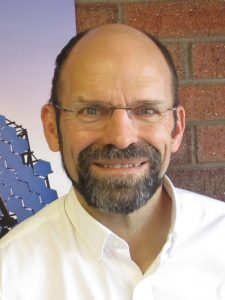 In June, David Kieda was named dean of the U’s Graduate School. As professor and chair of the Department of Physics and Astronomy at the U, Kieda worked closely with faculty and administrators to establish and expand the astronomy program. Kieda received his undergraduate degree from the Massachusetts Institute of Technology and his doctorate in physics from the University of Pennsylvania. He joined the University of Utah faculty in 1990 and is an internationally known researcher on the use of astronomical telescopes and observations to study the fundamental particles and forces in the universe. He was honored with the 2012 Utah Governors Medal of Science and Technology and the U’s 2013 Distinguished Scholarly and Creative Research Award.
In June, David Kieda was named dean of the U’s Graduate School. As professor and chair of the Department of Physics and Astronomy at the U, Kieda worked closely with faculty and administrators to establish and expand the astronomy program. Kieda received his undergraduate degree from the Massachusetts Institute of Technology and his doctorate in physics from the University of Pennsylvania. He joined the University of Utah faculty in 1990 and is an internationally known researcher on the use of astronomical telescopes and observations to study the fundamental particles and forces in the universe. He was honored with the 2012 Utah Governors Medal of Science and Technology and the U’s 2013 Distinguished Scholarly and Creative Research Award. Also in June, Alberta Davis Comer was named dean and director of the U’s J. Willard Marriott Library and University Librarian, and she assumed her new roles in August. Prior to her arrival at the U, she had served as dean and associate dean of library services at Indiana State University’s Cunningham Memorial Library since 2004.
Also in June, Alberta Davis Comer was named dean and director of the U’s J. Willard Marriott Library and University Librarian, and she assumed her new roles in August. Prior to her arrival at the U, she had served as dean and associate dean of library services at Indiana State University’s Cunningham Memorial Library since 2004. In July, the U announced that María E. Fránquiz would become dean of the College of Education this coming January. She currently teaches qualitative research methods and bilingual teacher education at the University of Texas at Austin, where she is also an affiliate faculty member in the Center for Mexican American Studies and assistant dean of Faculty Development in the College of Education.
In July, the U announced that María E. Fránquiz would become dean of the College of Education this coming January. She currently teaches qualitative research methods and bilingual teacher education at the University of Texas at Austin, where she is also an affiliate faculty member in the Center for Mexican American Studies and assistant dean of Faculty Development in the College of Education. The University of Utah broke ground in June on a new College of Law building, which will facilitate new approaches to legal education based on more hands-on learning and skills training.
The University of Utah broke ground in June on a new College of Law building, which will facilitate new approaches to legal education based on more hands-on learning and skills training. The work of ophthalmologists Geoffrey Tabin and Alan Crandall, both of the University of Utah’s John A. Moran Eye Center, is detailed in a new book Second Suns, which chronicles their efforts to end preventable blindness in Nepal.
The work of ophthalmologists Geoffrey Tabin and Alan Crandall, both of the University of Utah’s John A. Moran Eye Center, is detailed in a new book Second Suns, which chronicles their efforts to end preventable blindness in Nepal. Kathryn Bond Stockton, a Distinguished Professor of English at the University of Utah, has received the Rosenblatt Prize for Excellence, the U’s most prestigious award for faculty. The $40,000 gift is presented annually to a faculty member who displays excellence in teaching, research, and administrative efforts. Stockton’s studies have focused on gender, sexuality, LGBT issues, and cultural theory. She has been a member of the U faculty since 1987 and was made Distinguished Professor of English in 2012. She also served as director of the U’s Gender Studies Program for more than 10 years, transforming it into a nationally recognized center for scholarly inquiry.
Kathryn Bond Stockton, a Distinguished Professor of English at the University of Utah, has received the Rosenblatt Prize for Excellence, the U’s most prestigious award for faculty. The $40,000 gift is presented annually to a faculty member who displays excellence in teaching, research, and administrative efforts. Stockton’s studies have focused on gender, sexuality, LGBT issues, and cultural theory. She has been a member of the U faculty since 1987 and was made Distinguished Professor of English in 2012. She also served as director of the U’s Gender Studies Program for more than 10 years, transforming it into a nationally recognized center for scholarly inquiry. For the second time in five years, the United Kingdom’s Princess Anne awarded the prestigious Whitley Gold Award for conservation to Çağan Şekercioğlu. The University of Utah ornithologist and conservation biologist is the first person to have won the Whitley Gold Award twice from the Whitley Fund for Nature. He previously won in 2008, while working at Stanford University, for his efforts to safeguard bird-rich wetlands around northeast Turkey’s Kuyucuk Lake. He won the latest award for convincing Turkey’s government to create its first wildlife corridor for large carnivores such as wolves, brown bears, and Caucasian lynx.
For the second time in five years, the United Kingdom’s Princess Anne awarded the prestigious Whitley Gold Award for conservation to Çağan Şekercioğlu. The University of Utah ornithologist and conservation biologist is the first person to have won the Whitley Gold Award twice from the Whitley Fund for Nature. He previously won in 2008, while working at Stanford University, for his efforts to safeguard bird-rich wetlands around northeast Turkey’s Kuyucuk Lake. He won the latest award for convincing Turkey’s government to create its first wildlife corridor for large carnivores such as wolves, brown bears, and Caucasian lynx. The University of Utah’s newest residence hall has received gold certification using Leadership in Energy and Environmental Design standards, making it the first LEED-certified college residence hall in Utah. The 167,000-square-foot Donna Garff Marriott Honors Residential Scholars Community exceeded minimum efficiency standards by more than 30 percent, resulting in a $55,000 annual energy savings. “We worked hard to ensure tremendous energy savings without increasing our construction budget,” says Myron Willson, director of the U’s Office of Sustainability.
The University of Utah’s newest residence hall has received gold certification using Leadership in Energy and Environmental Design standards, making it the first LEED-certified college residence hall in Utah. The 167,000-square-foot Donna Garff Marriott Honors Residential Scholars Community exceeded minimum efficiency standards by more than 30 percent, resulting in a $55,000 annual energy savings. “We worked hard to ensure tremendous energy savings without increasing our construction budget,” says Myron Willson, director of the U’s Office of Sustainability.







 Get ready for the official Utah away-game tailgate parties of the 2013 football season! This fall, the University of Utah Alumni Association is going on the road to host tailgate parties at two Pac-12 venues: the University of Southern California and the University of Oregon.
Get ready for the official Utah away-game tailgate parties of the 2013 football season! This fall, the University of Utah Alumni Association is going on the road to host tailgate parties at two Pac-12 venues: the University of Southern California and the University of Oregon. The University of Utah’s 15th European Alumni Reunion, organized by former U exchange students Muriel Van Alsté and Esther Gloudemans, was held May 17 to 19 in Eindhoven, the Netherlands, a city known for its high-tech industry. Eindhoven, located in the province of North Brabant, in the south of the Netherlands, is the fifth-largest city in the country. The Philips electronics company was founded there in 1891, and the city is a mix of modern design and old industries.
The University of Utah’s 15th European Alumni Reunion, organized by former U exchange students Muriel Van Alsté and Esther Gloudemans, was held May 17 to 19 in Eindhoven, the Netherlands, a city known for its high-tech industry. Eindhoven, located in the province of North Brabant, in the south of the Netherlands, is the fifth-largest city in the country. The Philips electronics company was founded there in 1891, and the city is a mix of modern design and old industries.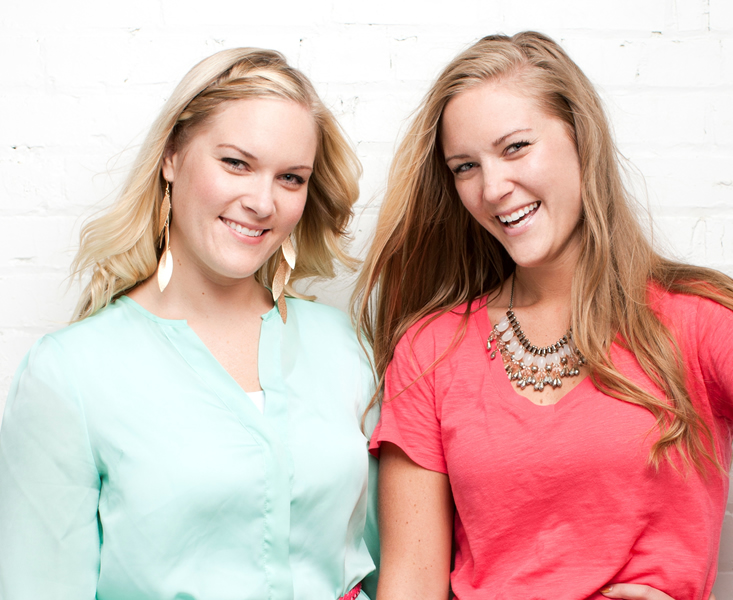
 Carolyn B. McHugh BA’78 JD’82, a Utah appellate judge, has been appointed by President Barack Obama to the 10th U.S. Circuit Court of Appeals in Denver. The appointment is subject to the approval of the U.S. Senate. McHugh was appointed in 2005 to the Utah Court of Appeals. She previously worked for 22 years at the Salt Lake City law firm Parr Brown Gee & Loveless until her appointment to the bench by then Utah Governor Jon Huntsman, Jr. McHugh graduated from the University’s College of Law, where she later taught as an adjunct professor. The 10th Circuit covers federal appeals for six states, including Utah and Colorado.
Carolyn B. McHugh BA’78 JD’82, a Utah appellate judge, has been appointed by President Barack Obama to the 10th U.S. Circuit Court of Appeals in Denver. The appointment is subject to the approval of the U.S. Senate. McHugh was appointed in 2005 to the Utah Court of Appeals. She previously worked for 22 years at the Salt Lake City law firm Parr Brown Gee & Loveless until her appointment to the bench by then Utah Governor Jon Huntsman, Jr. McHugh graduated from the University’s College of Law, where she later taught as an adjunct professor. The 10th Circuit covers federal appeals for six states, including Utah and Colorado. Carlos Braceras BS’88 has been named by Utah Governor Gary Herbert to head the Utah Department of Transportation (UDOT). Braceras had been the department’s deputy director for 12 years. As executive director, Braceras is now responsible for the department’s 1,800 employees, as well as the design, construction, and maintenance of Utah’s 6,000-mile system of highways, and he serves as a member of the governor’s cabinet. As deputy director, he and former director John Njord BS’88 led the department through the 2002 Olympics, construction of Legacy Parkway, the rebuild of Interstate 15 in Utah County, the new Mountain View Corridor, and the introduction of several innovative interchanges intended to reduce congestion. Braceras joined UDOT in 1986. He holds a bachelor’s degree in civil engineering from the University of Utah.
Carlos Braceras BS’88 has been named by Utah Governor Gary Herbert to head the Utah Department of Transportation (UDOT). Braceras had been the department’s deputy director for 12 years. As executive director, Braceras is now responsible for the department’s 1,800 employees, as well as the design, construction, and maintenance of Utah’s 6,000-mile system of highways, and he serves as a member of the governor’s cabinet. As deputy director, he and former director John Njord BS’88 led the department through the 2002 Olympics, construction of Legacy Parkway, the rebuild of Interstate 15 in Utah County, the new Mountain View Corridor, and the introduction of several innovative interchanges intended to reduce congestion. Braceras joined UDOT in 1986. He holds a bachelor’s degree in civil engineering from the University of Utah. H. Jay Ford III BUS’82 JD’85 has been appointed by California Governor Edmund G. Brown, Jr., to be a judge in the Los Angeles County Superior Court. Ford has served as commissioner at the Los Angeles County Superior Court since 2005. He was an associate and shareholder at Tyre Kamins Katz and Granof Law Corporation from 1987 to 2005 and served as a litigation associate at the Law Office of Adams Duque and Hazeltine from 1985 to 1987. Ford received a bachelor’s degree in social and behavioral science and a juris doctorate at the U.
H. Jay Ford III BUS’82 JD’85 has been appointed by California Governor Edmund G. Brown, Jr., to be a judge in the Los Angeles County Superior Court. Ford has served as commissioner at the Los Angeles County Superior Court since 2005. He was an associate and shareholder at Tyre Kamins Katz and Granof Law Corporation from 1987 to 2005 and served as a litigation associate at the Law Office of Adams Duque and Hazeltine from 1985 to 1987. Ford received a bachelor’s degree in social and behavioral science and a juris doctorate at the U. Renee M. Jimenez BS’88 JD’91 has been appointed by Utah Governor Gary Herbert to fill a vacancy on the 3rd District Juvenile Court bench, which serves Salt Lake, Summit, and Tooele counties. As an attorney and an assistant Utah attorney general, Jimenez has managed hundreds of active child support, child abuse, and neglect cases. At the U, she received a bachelor’s degree in behavioral science and health, and a juris doctorate.
Renee M. Jimenez BS’88 JD’91 has been appointed by Utah Governor Gary Herbert to fill a vacancy on the 3rd District Juvenile Court bench, which serves Salt Lake, Summit, and Tooele counties. As an attorney and an assistant Utah attorney general, Jimenez has managed hundreds of active child support, child abuse, and neglect cases. At the U, she received a bachelor’s degree in behavioral science and health, and a juris doctorate. John Youngren BA’88 received the 2013 Professional of the Year award from the American Advertising Federation of Utah. Youngren is a vice president and group account director at Love Communications, where he provides advertising, creative, and public relations expertise to accounts including the Utah Lieutenant Governor’s Office, United Way of Salt Lake, and the Utah Department of Health’s anti-tobacco campaign. Following career stints as a sportswriter and columnist, a radio talk show host, a television critic, and even (briefly) a comedian, Youngren has now been with Love Communications for more than a decade. He also is a former member of the University of Utah Alumni Association’s Board of Directors.
John Youngren BA’88 received the 2013 Professional of the Year award from the American Advertising Federation of Utah. Youngren is a vice president and group account director at Love Communications, where he provides advertising, creative, and public relations expertise to accounts including the Utah Lieutenant Governor’s Office, United Way of Salt Lake, and the Utah Department of Health’s anti-tobacco campaign. Following career stints as a sportswriter and columnist, a radio talk show host, a television critic, and even (briefly) a comedian, Youngren has now been with Love Communications for more than a decade. He also is a former member of the University of Utah Alumni Association’s Board of Directors.
 Jon Pierpont BS’91 has been named the new executive director of the Utah Department of Workforce Services. Pierpont was appointed acting director by Governor Gary Herbert in August 2012, when caseloads were high, budgets were tight, and employee morale was low. In May, state senators voted unanimously to keep him on the job. Pierpont has spent half his life working in various capacities in the agency he now leads. After graduating from the University of Utah with a degree in sociology and an emphasis in criminology, he was hired as an eligibility case manager in 1992. By late 1993, he had been named to head the state’s central region.
Jon Pierpont BS’91 has been named the new executive director of the Utah Department of Workforce Services. Pierpont was appointed acting director by Governor Gary Herbert in August 2012, when caseloads were high, budgets were tight, and employee morale was low. In May, state senators voted unanimously to keep him on the job. Pierpont has spent half his life working in various capacities in the agency he now leads. After graduating from the University of Utah with a degree in sociology and an emphasis in criminology, he was hired as an eligibility case manager in 1992. By late 1993, he had been named to head the state’s central region. Cecilia Romero BA’98 JD’02 has received the Utah State Bar’s Raymond S. Uno Award for the Advancement of Minorities in the Legal Profession. Romero is a partner with Holland & Hart, where she specializes in commercial litigation and labor and employment, in proceedings before the federal and state courts. Romero was instrumental in creating the Utah Minority Bar Association Diversity Pipeline Initiative, which pairs attorneys from the law firm of Holland & Hart with students from the law schools at the University of Utah and Brigham Young University.
Cecilia Romero BA’98 JD’02 has received the Utah State Bar’s Raymond S. Uno Award for the Advancement of Minorities in the Legal Profession. Romero is a partner with Holland & Hart, where she specializes in commercial litigation and labor and employment, in proceedings before the federal and state courts. Romero was instrumental in creating the Utah Minority Bar Association Diversity Pipeline Initiative, which pairs attorneys from the law firm of Holland & Hart with students from the law schools at the University of Utah and Brigham Young University.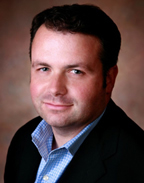 Jason Mathis BS’96 MPA’02 was honored in March by the White House as a Cesar Chavez Champion of Change, along with 10 other immigration-reform activists. Mathis received the recognition for his help in promoting the Utah Compact, a declaration of five compassionate principles to guide the immigration discussions in Utah. Mathis noted that the Utah Compact was developed in response to Arizona’s tough immigration enforcement bill. More than 100 Utah businesses, law enforcement officials, political groups, and faith organizations signed the compact. Mathis currently serves as director of the Downtown Alliance and executive vice president of the Salt Lake Chamber.
Jason Mathis BS’96 MPA’02 was honored in March by the White House as a Cesar Chavez Champion of Change, along with 10 other immigration-reform activists. Mathis received the recognition for his help in promoting the Utah Compact, a declaration of five compassionate principles to guide the immigration discussions in Utah. Mathis noted that the Utah Compact was developed in response to Arizona’s tough immigration enforcement bill. More than 100 Utah businesses, law enforcement officials, political groups, and faith organizations signed the compact. Mathis currently serves as director of the Downtown Alliance and executive vice president of the Salt Lake Chamber. Alex Jensen BS’05, who was part of the University of Utah’s starting lineup during the 1997-98 basketball season, has been named the Dennis Johnson Coach of the Year, as voted by his fellow NBA Development League head coaches. Jensen was head coach of the Canton, Ohio-based Canton Charge, whose NBA affiliate is the Cleveland Cavaliers, until this past July, when he was hired by the NBA’s Utah Jazz to be a player development assistant. He guided Canton to a franchise-best 30 victories during the 2012-13 regular season, en route to an East Division title and the 2013 NBA D-League Playoffs, where the team was defeated by the Tulsa 66ers in the first round. Jensen played for Coach Rick Majerus during his time with the Utes and was named to the All-West Regional team during the NCAA Tournament in 1998, as Utah went 30-4 and played for the national championship. He was named the 1999 Western Athletic Conference Men’s Basketball Tournament Most Valuable Player.
Alex Jensen BS’05, who was part of the University of Utah’s starting lineup during the 1997-98 basketball season, has been named the Dennis Johnson Coach of the Year, as voted by his fellow NBA Development League head coaches. Jensen was head coach of the Canton, Ohio-based Canton Charge, whose NBA affiliate is the Cleveland Cavaliers, until this past July, when he was hired by the NBA’s Utah Jazz to be a player development assistant. He guided Canton to a franchise-best 30 victories during the 2012-13 regular season, en route to an East Division title and the 2013 NBA D-League Playoffs, where the team was defeated by the Tulsa 66ers in the first round. Jensen played for Coach Rick Majerus during his time with the Utes and was named to the All-West Regional team during the NCAA Tournament in 1998, as Utah went 30-4 and played for the national championship. He was named the 1999 Western Athletic Conference Men’s Basketball Tournament Most Valuable Player. Cleone Peterson Eccles BS’57 died April 5, 2013, after a courageous battle with cancer. She was 78.
Cleone Peterson Eccles BS’57 died April 5, 2013, after a courageous battle with cancer. She was 78. R. E. “Earl” Holding BS’51 died of natural causes on April 19, 2013. He was 86.
R. E. “Earl” Holding BS’51 died of natural causes on April 19, 2013. He was 86. Brooke Hopkins died July 31, 2013, in his Salt Lake City home. He was 71.
Brooke Hopkins died July 31, 2013, in his Salt Lake City home. He was 71.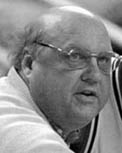 Rick Majerus died December 1, 2012, while awaiting a heart transplant. He was 64.
Rick Majerus died December 1, 2012, while awaiting a heart transplant. He was 64. Susan Miller died February 22, 2013, in the company of friends after a 10-month battle with cancer. She was 70.
Susan Miller died February 22, 2013, in the company of friends after a 10-month battle with cancer. She was 70.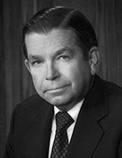 Lennie Sam Skaggs, Jr., died of natural causes on March 21, 2013, surrounded by his family. He was 89.
Lennie Sam Skaggs, Jr., died of natural causes on March 21, 2013, surrounded by his family. He was 89. Beverley Taylor Sorenson BS’45 died of natural causes on May 27, 2013. She was 89.
Beverley Taylor Sorenson BS’45 died of natural causes on May 27, 2013. She was 89.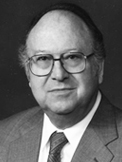 Milton Elliot Wadsworth BS’48 PhD’51 died January 31, 2013, after a brief struggle with pancreatic cancer. He was 90.
Milton Elliot Wadsworth BS’48 PhD’51 died January 31, 2013, after a brief struggle with pancreatic cancer. He was 90.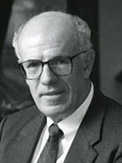 Homer Warner BA’46 MD’49 died November 30, 2012, from complications of pancreatitis. He was 90.
Homer Warner BA’46 MD’49 died November 30, 2012, from complications of pancreatitis. He was 90.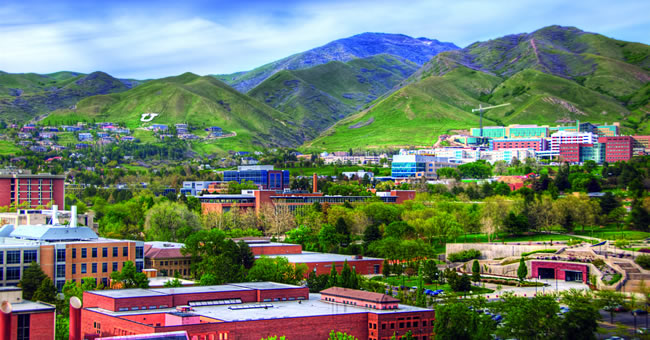
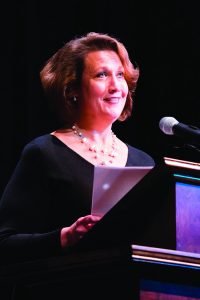 Watkins, who is a professor of speech and hearing science, will begin work at the U in August. “I’m honored to be joining a Pac-12 university that is growing in stature nationally and internationally,” she says. “I look forward to working with the faculty, staff, and students of the University of Utah to implement President Pershing’s vision for delivering a high-quality academic experience that prepares students for meaningful roles in the global community.”
Watkins, who is a professor of speech and hearing science, will begin work at the U in August. “I’m honored to be joining a Pac-12 university that is growing in stature nationally and internationally,” she says. “I look forward to working with the faculty, staff, and students of the University of Utah to implement President Pershing’s vision for delivering a high-quality academic experience that prepares students for meaningful roles in the global community.” “It was a great year on the Hill for the University of Utah and higher education in the state,” said University of Utah President David W. Pershing, in a letter thanking the many political advocates who helped advance the U’s causes during the 2013 legislative session. More than 400 volunteers—alumni, present and former faculty and staff members, and students—have signed up to be political advocates for the University, and they helped by contacting lawmakers at key junctures to voice their support for the U. Their efforts were coordinated by the U for Higher Ed Committee through a program sponsored by the University of Utah Alumni Association and the University’s Office of Government Affairs.
“It was a great year on the Hill for the University of Utah and higher education in the state,” said University of Utah President David W. Pershing, in a letter thanking the many political advocates who helped advance the U’s causes during the 2013 legislative session. More than 400 volunteers—alumni, present and former faculty and staff members, and students—have signed up to be political advocates for the University, and they helped by contacting lawmakers at key junctures to voice their support for the U. Their efforts were coordinated by the U for Higher Ed Committee through a program sponsored by the University of Utah Alumni Association and the University’s Office of Government Affairs. The University of Utah’s commitment to sustainability and environmental stewardship has been recognized by the U.S. Environmental Protection Agency, which announced in April that the U is the Pac-12 conference champion for the 2012-13 College & University Green Power Challenge. The U beat its conference rivals by using more than 93 million kilowatthours of green power, representing 31 percent of the University’s annual electricity usage.
The University of Utah’s commitment to sustainability and environmental stewardship has been recognized by the U.S. Environmental Protection Agency, which announced in April that the U is the Pac-12 conference champion for the 2012-13 College & University Green Power Challenge. The U beat its conference rivals by using more than 93 million kilowatthours of green power, representing 31 percent of the University’s annual electricity usage. The Utah State Board of Regents in late March approved a master’s degree in Entertainment Arts and Engineering (EAE) at the University of Utah. EAE is an interdisciplinary program between the U’s colleges of Fine Arts and Engineering and will provide the first advanced degree for the discipline in the state.
The Utah State Board of Regents in late March approved a master’s degree in Entertainment Arts and Engineering (EAE) at the University of Utah. EAE is an interdisciplinary program between the U’s colleges of Fine Arts and Engineering and will provide the first advanced degree for the discipline in the state. The David Eccles School of Business at the University of Utah has appointed Natalie Gochnour BS’84 MS’88 as an associate dean. A 28-year Utah public policy veteran, Gochnour’s U job will involve enhancing the relevance, reputation, and relationships of the school with business and community leaders throughout the state.
The David Eccles School of Business at the University of Utah has appointed Natalie Gochnour BS’84 MS’88 as an associate dean. A 28-year Utah public policy veteran, Gochnour’s U job will involve enhancing the relevance, reputation, and relationships of the school with business and community leaders throughout the state.


 The University of Utah Alumni Association’s Young Alumni Board won a Council for Advancement and Support of Education (CASE) Award of Excellence for outstanding alumni programming at the annual CASE District VII Conference in San Francisco in March. The “bronze” award was given for their successful efforts in putting together the Young Alumni 5K Run and KidsK on Homecoming Day.
The University of Utah Alumni Association’s Young Alumni Board won a Council for Advancement and Support of Education (CASE) Award of Excellence for outstanding alumni programming at the annual CASE District VII Conference in San Francisco in March. The “bronze” award was given for their successful efforts in putting together the Young Alumni 5K Run and KidsK on Homecoming Day.

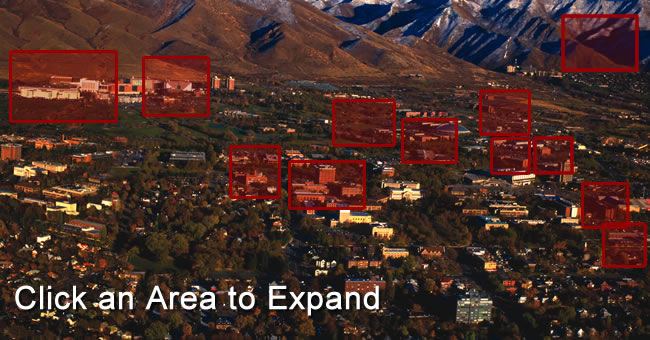


















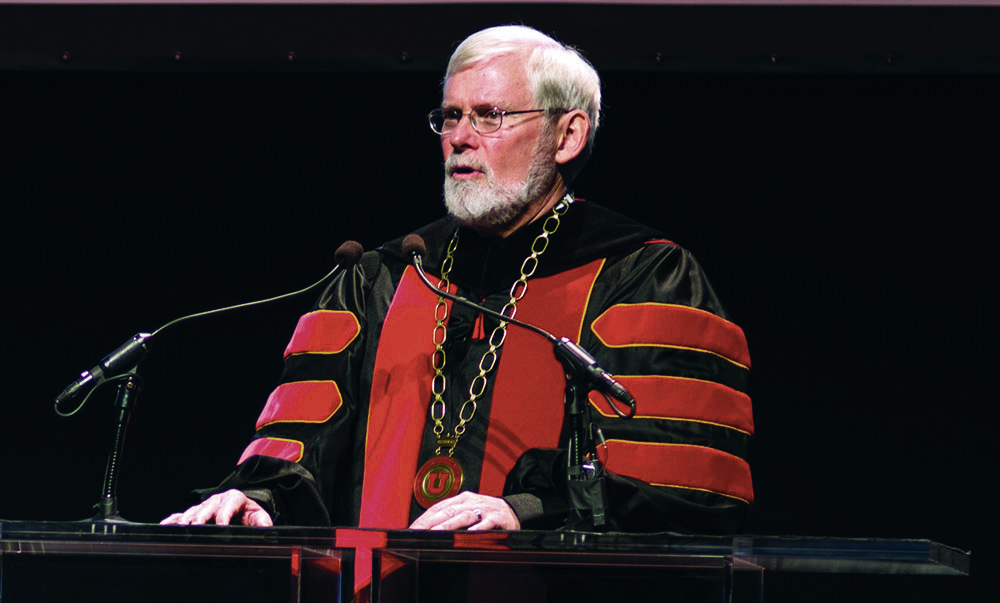

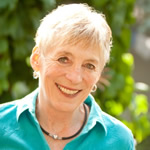













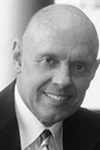




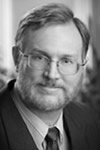
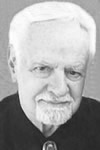



 Continuum has gone green. With our new printing contract that begins with this issue, we’re continuing the theme of our Summer 2012 issue, and the magazine is now printed on 10 percent post-consumer-waste recycled paper. Our cover now has a varnish protective coat that is far more environmentally friendly than the UV coat we used in the past. And Continuum now bears the Forest Stewardship Council (FSC) logo (take a look at the bottom of page 2 in the print magazine).
Continuum has gone green. With our new printing contract that begins with this issue, we’re continuing the theme of our Summer 2012 issue, and the magazine is now printed on 10 percent post-consumer-waste recycled paper. Our cover now has a varnish protective coat that is far more environmentally friendly than the UV coat we used in the past. And Continuum now bears the Forest Stewardship Council (FSC) logo (take a look at the bottom of page 2 in the print magazine).

